Have you ever wondered how to tell a weasel and a fisher apart? This blog will tell you all about weasels and fishers, where they live, what they eat, and more!
Weasels and fishers belong to the Mustelid family. Their relatives, including badgers, otters, ferrets, martens, minks and wolverines are found all over the world, in habitats ranging from the tropics to the Arctic.
As skilled hunters, most of them have slender tube-shaped bodies, short legs, long tails, strong necks and small heads with rounded ears. Many have thick fur which protects them in cold climates, but which also makes their pelts a valuable commodity for trappers.
Let’s learn a bit more about the weasels and fisher that call our province home!
Three weasel species call North America home:
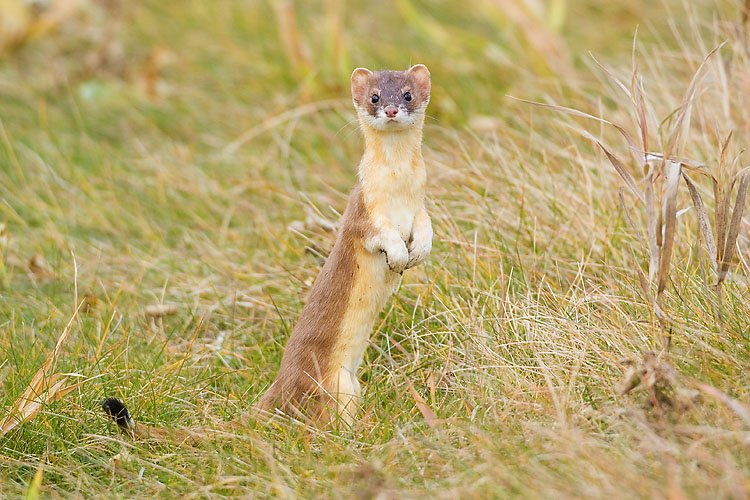
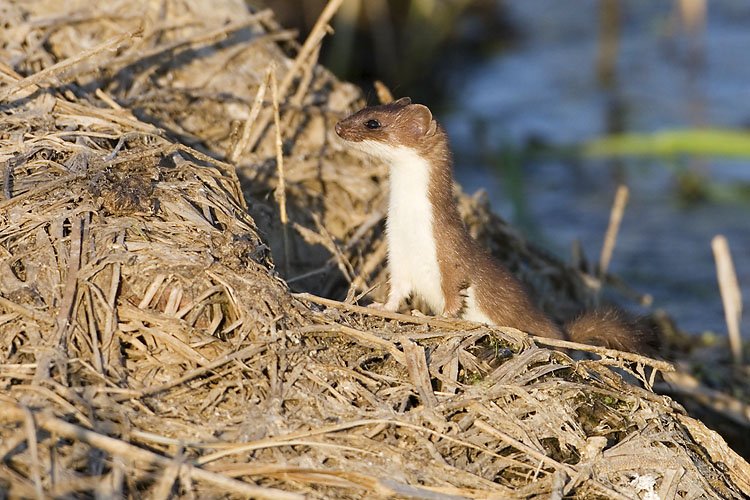
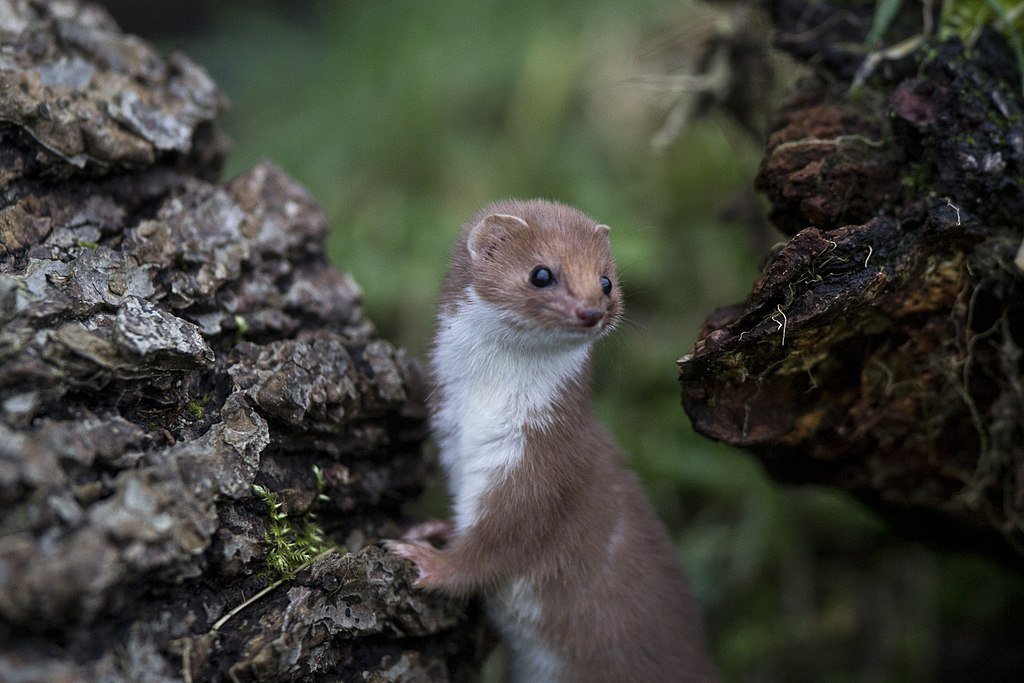
What do they look like?
The Long-tailed weasel (Mustela frenata) is the largest with an average length of 40.5 cm (16”) and weight of 340 gm (12 oz)
The Short-tailed weasel (Mustela erminea) measures around 33 cm (13”) and 170 gm (6 oz)
The Least weasel (Mustela nivalis) is the world’s smallest mammalian carnivore at 20 cm (8”) and 71 gm (2.5 oz) and is not much bigger than the mice it hunts.
Their coats are dark brown with lighter patches under the belly. In northern regions, it turns white in winter. Pelts harvested at this stage are usually sold as ermine.
Where do they live?
Weasels prefer coniferous forests or tundra, but are also found in marshes, meadows, open fields and farmland. Most live in abandoned burrows, or nest under trees or rockpiles.
What do they eat?
Photo of a vole by Gerald Romanchuk
They eat rodents, rabbits, birds, eggs, insects and, given the chance, the occasional chicken. They hunt both day and night and are excellent climbers, swimmers and runners. A small, flexible body allows weasels to both get into underground burrows with ease, and wrap around larger animals to hold them still during an attack. They eat around 40% of their body weight each day and often kill more than they can eat, storing the rest for later.
Life cycles
Weasels usually mate in late spring and summer. After mating, the embryos (fertilized eggs) may not be implanted in the womb for months, meaning the litter of kits is not born until almost a year has passed. Gestation usually lasts 30-65 days. Long-tailed and short-tailed weasels have one litter per year, with an average of 4-9 young for the long-tailed and 6 for the short-tailed. Least weasels have 2-3 litters annually. Although the babies are raised by their mothers, male weasels may help females hunt food for the young.
Weasels don’t hibernate and are active all year long. Aside from mating or weaning young, weasels are solitary animals. They are very territorial and, much like skunks, will release a foul-smelling spray as a defense mechanism.
Did you know?
A group of weasels may be referred to as a “boogle”, “confusion”, “gang”, or “pack”
The fisher (Martes pennanti) is only found in North America
Photo of a fisher by Corey Hayes via flickr
What do they look like?
Fishers are one of the biggest members of the Mustelid family, with an average length (head to tail) of 80-112 cm (32-43”) and an average weight of 1.5 – 8 kg (3-17.6 lbs)
A fisher’s coat is dark brown, with a cream-coloured bib on its front. It has short legs and large feet with hairy soles and sharp, retractable claws on each of its five toes. Its hind limbs are able to rotate 180 degrees. In deep snow or on thin crusts it walks flat-footed to evenly distribute its weight over the snow.
Where do they live?
The fisher ranges through most of the boreal forest in Canada and the northern United States, preferring mature forest with access to open water. It avoids open areas and spends most of its time on the forest floor, foraging around fallen trees.
It sleeps in hollow trees or holes in the ground and usually hunts at night. The normal home range for an adult male is 20 square kilometres.
What do they eat?
Fishers are carnivores, but will also eat fruit, berries and mushrooms. They prey on small animals such as rabbits, snowshoe hares, squirrels, mice, frogs, reptiles, birds, and also eat insects and carrion.
Photo of a porcupine by Heidi Schuyt
It is one of the very few animals that will hunt porcupines, targeting the porcupine’s vulnerable face and underbelly. A fisher can even follow a porcupine up a tree, overtake it and then use its retractable claws to descend headfirst to launch a surprise attack.
In the 1950’s, logging companies in the U.S. reintroduced fishers into northern New England to control porcupines that were eating seedlings the timber companies had planted in order to re-forest logged areas.
The fisher has very few predators other than humans. One threat to the fisher is the bobcat - not because it hunts fishers, but because they compete for the same food.
Life cycles
Breeding takes place in March or April. After a delayed implantation period of 10-11 months (the longest of any mammal) followed by a gestation of about 6 weeks, a litter of 3-4 kits is born the following spring.
The kits are raised by their mothers. Fisher fathers do not help to feed the babies. A female will nurse and care for her kits until late summer, when they are old enough to set out on their own.
The fisher is also active throughout the year, and remains a solitary creature outside its brief mating period. Its life expectancy is approximately 10 years.
Did you know?
Despite its name, fishers do not hunt or eat fish. It is thought that early settlers named it after the European polecat which it resembles. Variations of name of the polecat and its pelt include "fitch", “fiche”, or "fitchet”
Perhaps because of this association with the polecat, it is sometimes misleadingly referred to as a fisher cat.
Weasels and Fishers and EALT
All three species of weasels and the fisher make their home on EALT lands! We have seen several weasels and fisher captured in our wildlife camera photos. Can you tell who is who? The first photo is tricky and may not be where you expect.



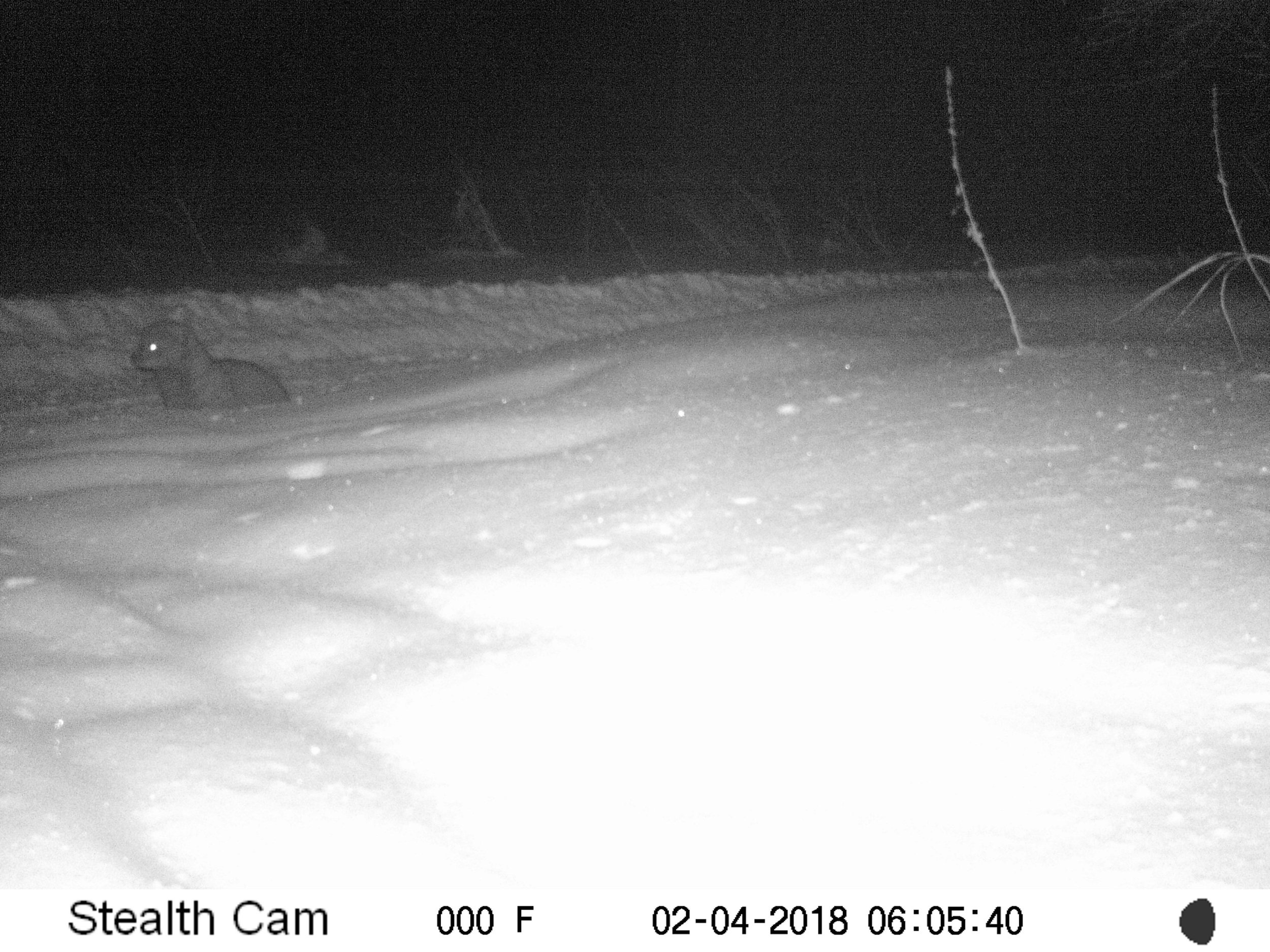
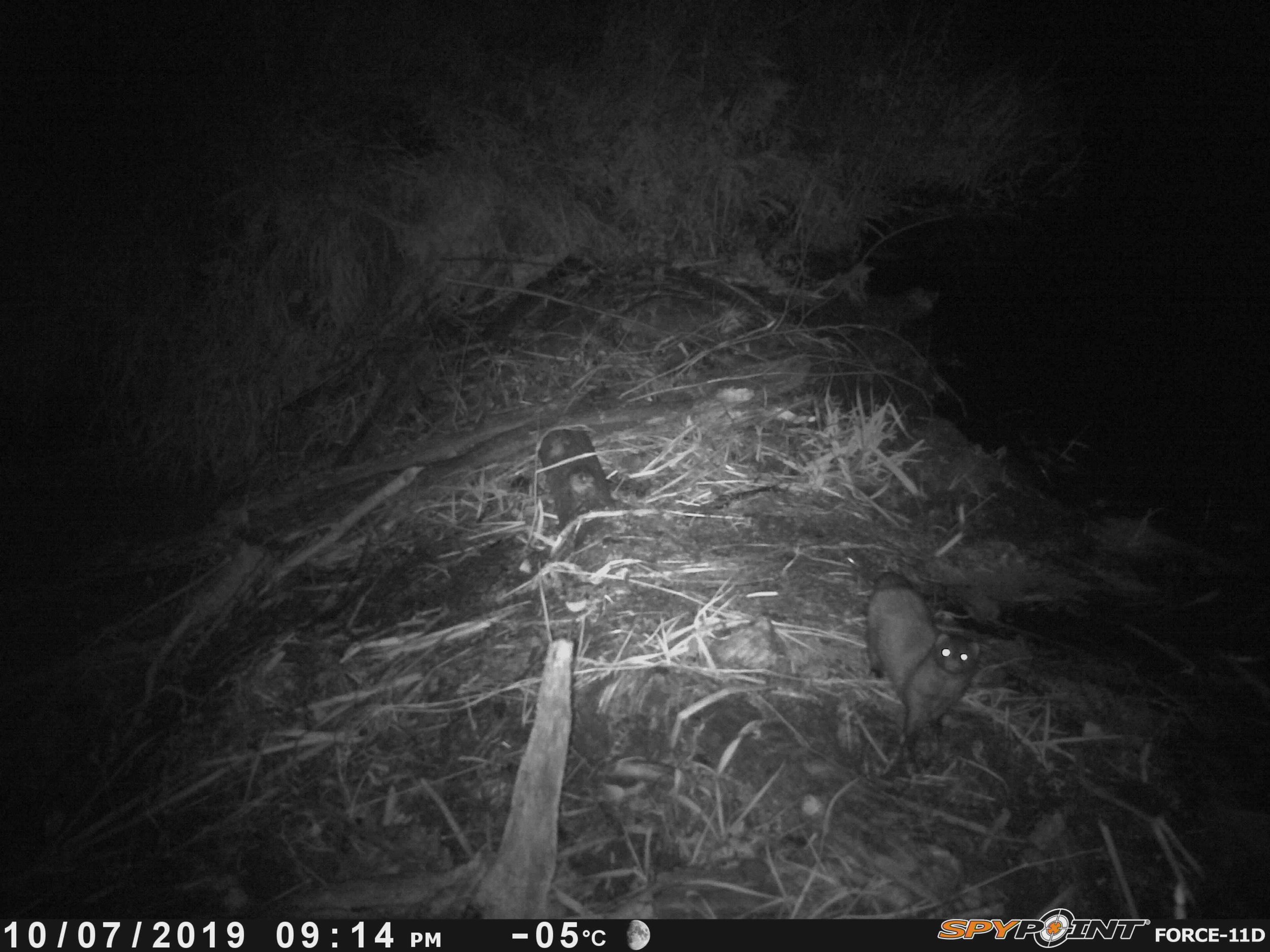
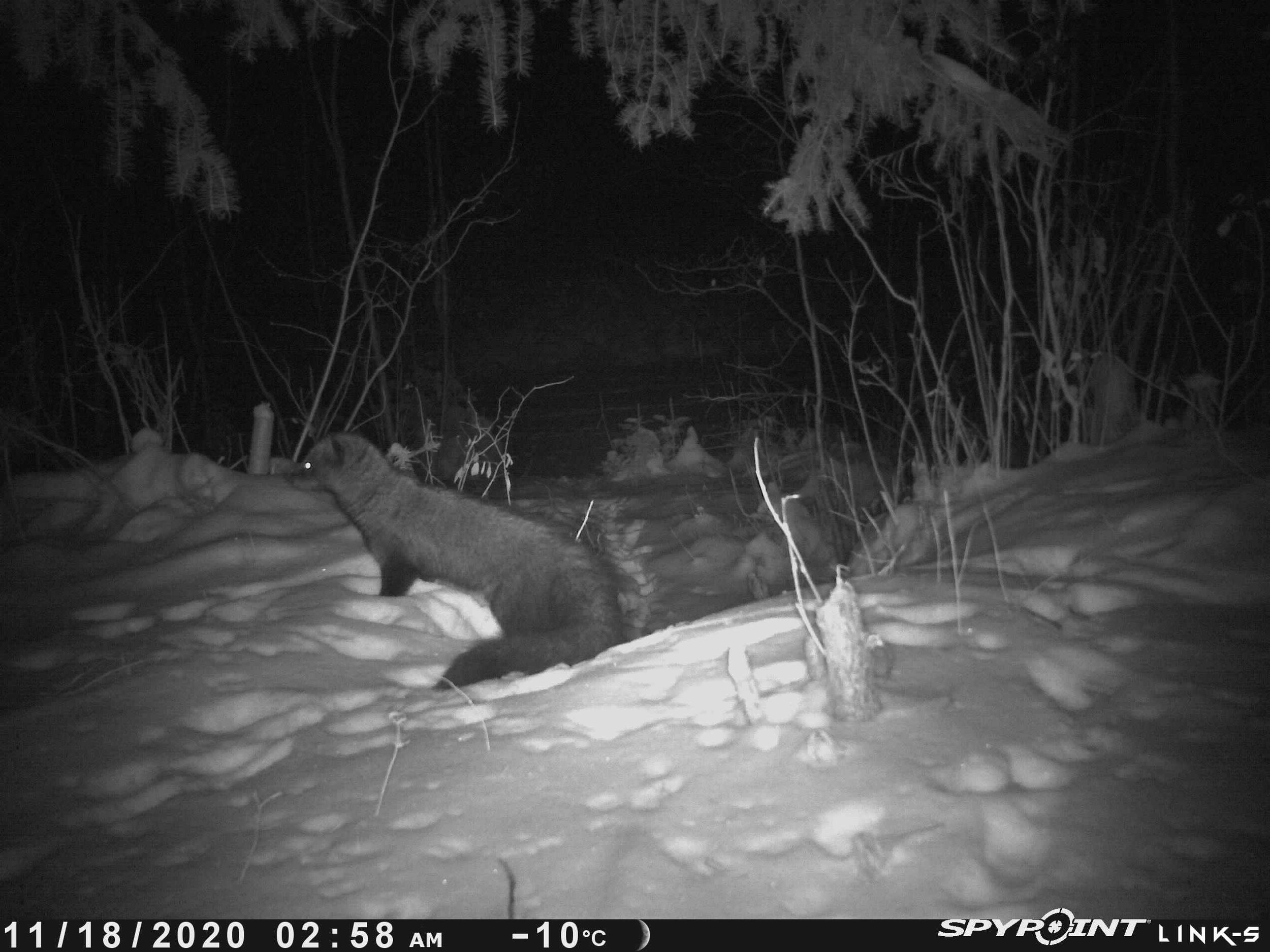
Prefer to learn by listening? One of our staff members recently gave a radio interview about fishers - listen here!
Still looking for more? Sign up for our Nature Notes Newsletter for more cool and interesting blogs. Thanks for reading!
Guest blog by Louise Dorner.



